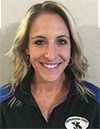It recently came to my attention that employee retention is an issue in most businesses today, and we are an outlier in this area. Sourcing employees and employee retention is a common question we receive during tours and community presentations. However, it wasn’t until a conversation last week with a pharmaceutical veterinarian that I realized we may be in the minority. This is something easy to forget when it’s not an issue on your dairy, but I can remember a time that we did struggle with employees and want to share what we’ve done to overcome this problem.
I truly believe it starts with management and creating a culture others want to be a part of. Creating a culture or changing your business’s culture does not happen overnight. I’ve been back at the farm six years, and only in the last couple of years can I say we’ve seen an improvement with employee retention. While my parents had a longtime crew, when I came back to the farm, new management brought many changes. We all know change is hard – and unfortunately, not everyone was willing to conform to the new standards. Several people quit, and others were let go, none of which was easy to weather as a new manager. However, I see now that was the critical step, though not easy.
We had a culture of everyone being very independent, not necessarily a bad thing – but not the culture I wanted to be a part of. If someone called in sick, I would call other members of the team and they wouldn’t answer their phones or would have an excuse as to why they couldn’t work, leaving me to fill the void. That was something I was willing to do as a young worker; however, it was no longer conducive to my responsibilities as a mother. I knew this was something I wanted to change and sought professional help.
In the beginning, we received help from other industry professionals. They helped us conduct and analyze personality assessments of the family and upper management as well as employee surveys to understand how they viewed the business and management. I think this was critical to develop our starting point, then be able to discuss how we wanted to see it change and a plan of how to get there.
It starts at the top. As an owner and manager, we have to model the culture we want day in and day out. For our dairy, we make it very clear to employees in the interview process that our animals mean the world to us and we don’t settle for average; we want them to have the very best care possible. We are a family farm and treat our employees as family. We celebrate birthdays, holidays and success as a team, and when we fall short of the goal, it’s on everyone as well. There is no “I” in team, and we need to hold everyone accountable for their actions.
We don’t tolerate truancy; if you don’t come to work, then you don’t deserve to work at our farm. The animals need to be fed, cleaned and milked every day, including holidays, and if you don't do it, you need to realize someone else needs to. I realize people get sick, emergencies happen, and people need time off, so that is why we cover for each other because that’s what family does. Also, we work hard and expect our employees to do the same.
Saying these things during an interview is one thing, but they require follow-through. We conduct one- and three-month reviews which are tied to monetary raises for our milkers and cow pushers, which make up two-thirds of our employees and typically had the most turnover. As soon as a new employee exhibits poor behavior, we make it clear that will not be tolerated and they will only be given one free pass, which was just used. I’m amazed how well employees have responded to this. I’ve had employees exemplify very poor judgment who have then become excellent employees after some correction and additional training.
With that being said, I’m not one to just go around firing people when they make mistakes. I strongly believe in ongoing training and constant feedback; just be careful your feedback isn’t always negative. It’s easy to tell people when they’ve made mistakes, but just as important to give them positive feedback for all the things they’re doing well. I know when we have challenges on the dairy, it’s easy to get down on yourself about the one thing going poorly, but for my mental health I constantly try to remind myself of the big picture and all the things that are going well. There’s always something to be thankful for, and getting buy-in from everyone on your team is the best way to achieve your goals.








